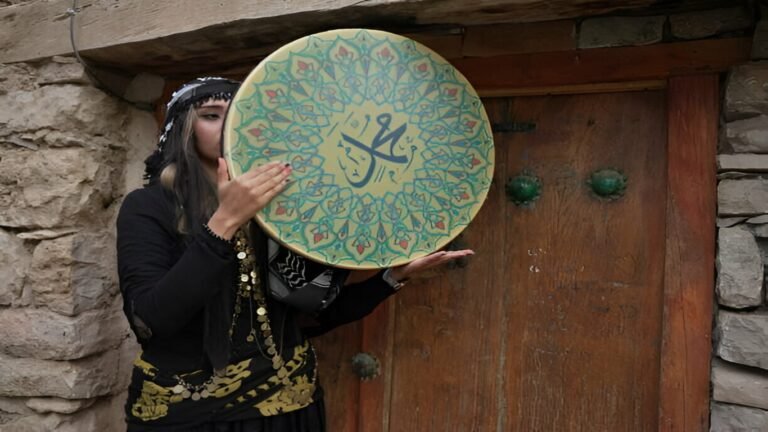The setar is a stringed musical instrument that is known for its beautiful and intricate design. The body of the instrument is pear-shaped and made from a variety of materials, but most commonly from mulberry wood. This choice of material contributes to the warm and resonant tone of the setar instrument.
In terms of its appearance, the body of the setar is often decorated with elaborate inlaid designs, which can be made from materials such as ivory, bone, and mother-of-pearl. These inlaid designs add to the visual appeal of the instrument and make each setar unique. The neck of the setar instrument is long and narrow, and it has several strings that are plucked to produce the music. The head of the setar is also decorated, and it often features intricate carvings and inlaid designs that further enhance the instrument’s visual beauty.
The popularity of the setar has been growing steadily in recent years, with more and more musicians taking an interest in this beautiful instrument. Whether used as a solo instrument or as part of a larger ensemble, the setar adds a unique and captivating voice to any musical performance.
In countries like Iran, the setar is considered a national treasure, with its rich cultural heritage and deep connections to the country’s history and traditions. However, the instrument’s appeal extends far beyond the borders of Iran, and its popularity continues to grow as more and more people discover its beauty and versatility.
In conclusion, the setar is not only a musical instrument, but also a work of art. Its beautiful design and warm, resonant tone make it a unique and beloved instrument in Persian culture and beyond. Whether it is being used to perform classical Persian music or simply admired for its beauty, the setar remains an important part of the rich cultural heritage of the Middle East.

Why Should We Learn to Play The Setar Instrument?
The setar is more than just an instrument, it’s a portal to a rich and vibrant cultural heritage. With its deep, soulful sound and intricate design, playing the setar is a true labor of love that requires dedication and a deep appreciation for the music and traditions that it represents.
By learning to play the setar, you’ll not only be able to immerse yourself in the music and culture of Iran, but you’ll also be able to explore the depths of your own creativity and express your own unique voice through the music you create.
In addition to the cultural and artistic benefits of playing the setar, this instrument can also have a profound impact on your mental and emotional well-being. The process of learning to play the setar requires focus and concentration, which can help you to reduce stress and improve your mental clarity. And the experience of playing music, whether alone or with others, can be deeply satisfying and bring a sense of joy and fulfillment to your life.
So, whether you’re a seasoned musician or simply someone who loves music and wants to explore something new, learning to play the setar is a truly enriching and rewarding experience that you won’t soon forget. So why not give it a try today?

How to Learn the Setar Instrument?
Mrs. Padideh Ahrarnejad, with years of experience and cooperation with great music masters, teaches setar at the Navasaz Academy. If you’re looking to learn this beautiful and intricate instrument, her class may be just what you need.
At the Navasaz Academy, you’ll have the opportunity to learn from a seasoned and knowledgeable teacher, who has dedicated her life to the study and performance of the setar. With her guidance and expertise, you’ll be able to develop your skills and learn all of the techniques necessary to play this unique and captivating instrument.
In addition to learning from Mrs. Ahrarnejad, you’ll also have the opportunity to participate in group classes and perform with other students. This will not only help you to improve your skills, but it will also give you the opportunity to experience the joy and excitement of playing music with others.
So, if you’re looking to learn the setar, the Navasaz Academy may be the perfect place to start. With the guidance of Mrs. Padideh Ahrarnejad and the support of your fellow students, you’ll be well on your way to mastering this beautiful and soulful instrument.
 String Instr
String Instr Percussion Instr
Percussion Instr Wind Instr
Wind Instr Keyboard Instr
Keyboard Instr Tools
Tools Books
Books

